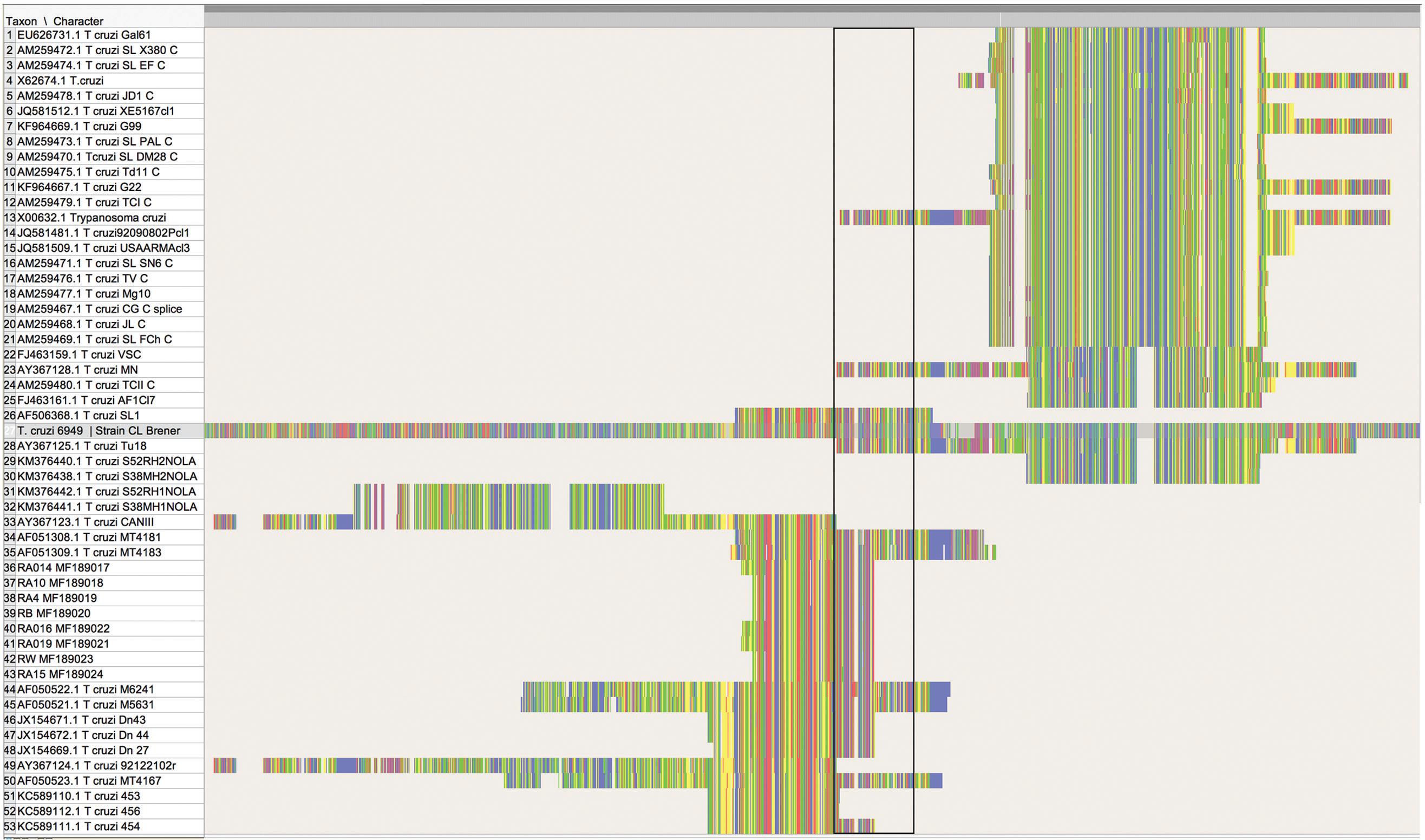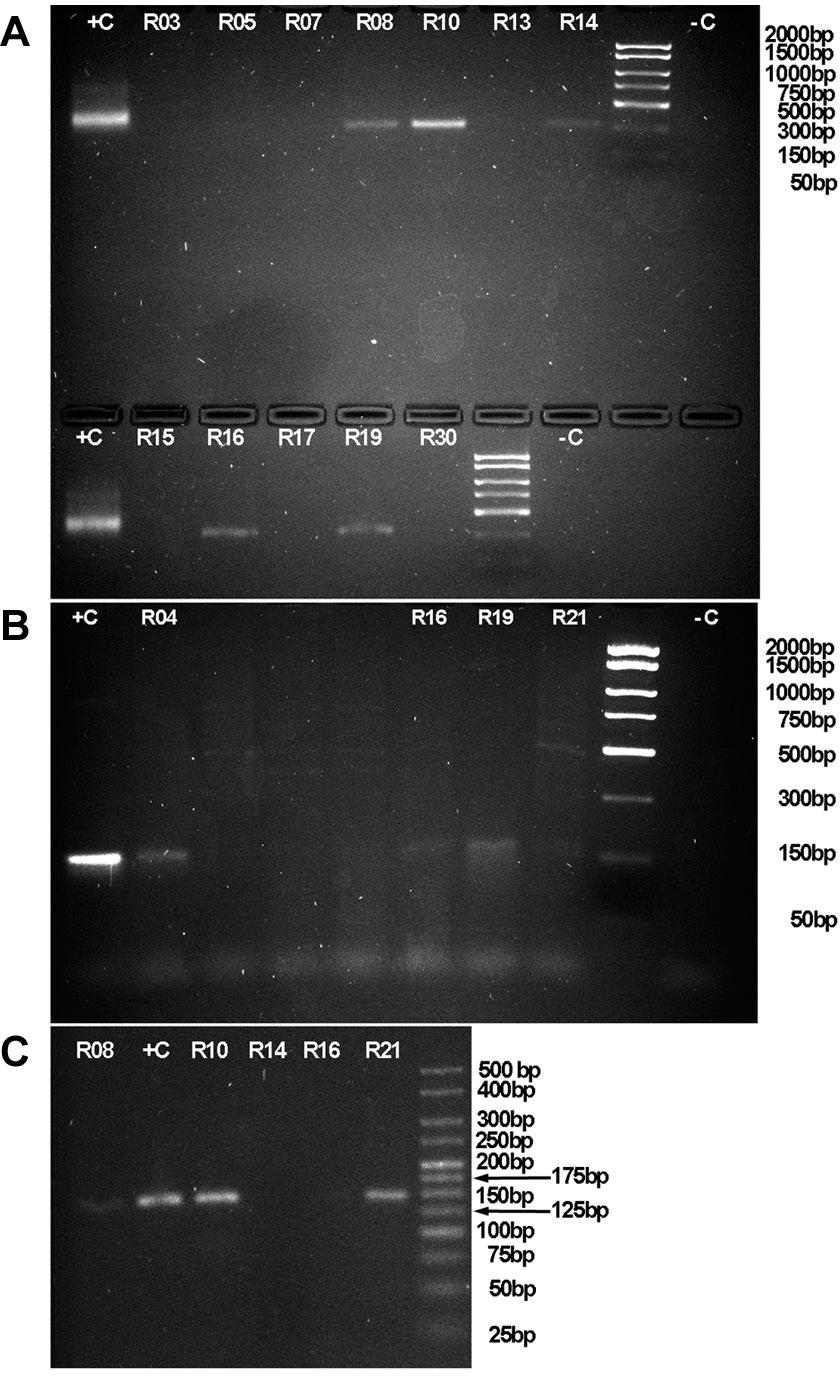BACKGROUND
The northern limits of Trypanosoma cruzi across the territory of the United States remain unknown. The known vectors Triatoma sanguisuga and T. lecticularia find their northernmost limits in Illinois; yet, earlier screenings of those insects did not reveal the presence of the pathogen, which has not been reported in vectors or reservoir hosts in this state.
OBJECTIVES
Five species of medium-sized mammals were screened for the presence of T. cruzi.
METHODS
Genomic DNA was isolated from heart, spleen and skeletal muscle of bobcats (Lynx rufus, n = 60), raccoons (Procyon lotor, n = 37), nine-banded armadillos (Dasypus novemcinctus, n = 5), Virginia opossums (Didelphis virginiana, n = 3), and a red fox (Vulpes vulpes). Infections were detected targeting DNA from the kinetoplast DNA minicircle (kDNA) and satellite DNA (satDNA). The discrete typing unit (DTU) was determined by amplifying two gene regions: the Spliced Leader Intergenic Region (SL), via a multiplex polymerase chain reaction, and the 24Sα ribosomal DNA via a heminested reaction. Resulting sequences were used to calculate their genetic distance against reference DTUs.
FINDINGS
18.9% of raccoons were positive for strain TcIV; the rest of mammals tested negative.
MAIN CONCLUSIONS
These results confirm for the first time the presence of T. cruzi in wildlife from Illinois, suggesting that a sylvatic life cycle is likely to occur in the region. The analyses of sequences of SL suggest that amplicons resulting from a commonly used multiplex reaction may yield non-homologous fragments.
Key words:
Trypanosoma cruzi; zoonotic disease; Midwest; raccoon; bobcat; Illinois




